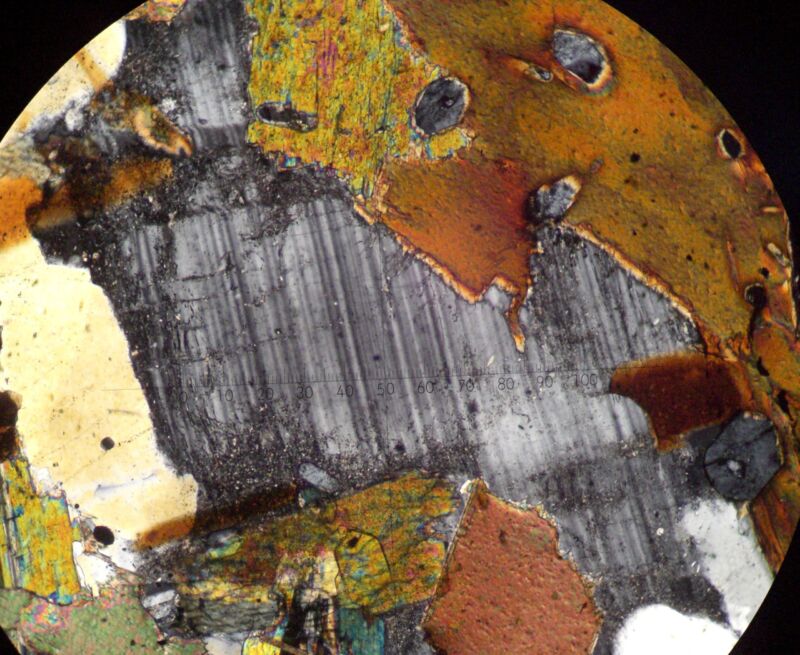Earth’s long-term climate controlled by just 12% of the landscape

Enlarge / A slice through a crystal of Feldspar (gray, center of view), a key mineral in the weathering process. (credit: Chmee2/Wikimedia CC-by-SA)
Scientists have understood for years that silicate minerals react with CO2 and water to remove CO2 from the atmosphere, acting as a thermostat that kept Earth's climate broadly stable over billions of years. But how sensitive is that thermostat? To find out, scientists need to scale up lab measurements to fit the real world, but it has been impossible to reconcile the lab work with the real-world measurements made in soils and rivers.
This gap in our understanding has hampered efforts to model Earth's long-term carbon cycle and climate, making it hard to predict exactly how effective silicate weathering, both natural and artificial, would be at removing CO2 from our atmosphere.
In a paper in the journal Science, professor Susan Brantley and her team from Penn State University have found a way to quantify silicate weathering's response to temperature consistently at all scales, from lab measurements and real-world measurements in landscapes to the whole world. In doing so, they have identified the kind of landscape that has the most influence on Earth's thermostat.